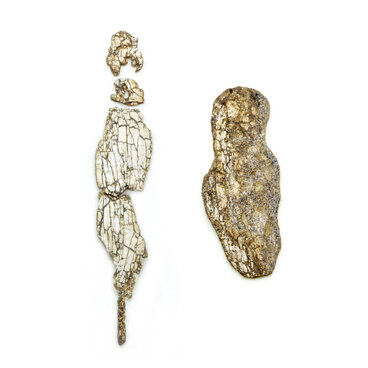The collection of the Regional Museum of Local History keeps a skull of a steppe bison that lived in the cold plains of Siberia thousands of years ago. The exhibit entered the collection in 1893, it was donated by a local resident. It is known that the skull was found in the Nizhneudinsky district, in the west of the Irkutsk region.
A distant ancestor of the bison was the bull of the genus Leptobos, that lived in India about 2.5 million years ago. It is a descendant of other bison, including the steppe bison, that was found in Europe, Central Asia, Japan, Siberia, in the north-west of Canada, as well as in Beringia — the territory that used to connect Asia and North America, and then went under water.
It was a large animal: weighing over a ton and about two meters high. The span of the horns reached 1.3 meters, and they weighed 50 kilograms. Modern descendants of the steppe bison are found in the forests of Europe and North America — for example, the European bison (Bison bonasus) and the American bison (Bison bison).
The animals ate grass, shoots, as well as leaves of trees and shrubs. Like other ungulate species — the reindeer and the ancient horse — the bison was a source of food for cave man and was hunted. This is evidenced by the remains of animals that were found at ancient sites, as well as scenes of persecution in rock art.
At the same time, during the Late Pleistocene (11-126 millennia ago), the tur (Bos primigenius)– an ancient bull, which was the progenitor of most breeds of cattle was also widespread on the territory of Eurasia. It was found almost all over Europe, as well as in North Africa, Asia Minor, India and the Caucasus.
The turs were black in color with a light stripe on the back. Their height at the at the withers was about 170-180 centimeters, and their weight was up to 800 kilograms. By 1400, the turs inhabited only relatively sparsely populated and inaccessible forests on the territory of present-day Poland, Belarus and Lithuania, and by 1627 they completely ceased to exist.
One of the main reasons for the disappearance of bison and turs is hunting and climate change, especially in northern latitudes.
A distant ancestor of the bison was the bull of the genus Leptobos, that lived in India about 2.5 million years ago. It is a descendant of other bison, including the steppe bison, that was found in Europe, Central Asia, Japan, Siberia, in the north-west of Canada, as well as in Beringia — the territory that used to connect Asia and North America, and then went under water.
It was a large animal: weighing over a ton and about two meters high. The span of the horns reached 1.3 meters, and they weighed 50 kilograms. Modern descendants of the steppe bison are found in the forests of Europe and North America — for example, the European bison (Bison bonasus) and the American bison (Bison bison).
The animals ate grass, shoots, as well as leaves of trees and shrubs. Like other ungulate species — the reindeer and the ancient horse — the bison was a source of food for cave man and was hunted. This is evidenced by the remains of animals that were found at ancient sites, as well as scenes of persecution in rock art.
At the same time, during the Late Pleistocene (11-126 millennia ago), the tur (Bos primigenius)– an ancient bull, which was the progenitor of most breeds of cattle was also widespread on the territory of Eurasia. It was found almost all over Europe, as well as in North Africa, Asia Minor, India and the Caucasus.
The turs were black in color with a light stripe on the back. Their height at the at the withers was about 170-180 centimeters, and their weight was up to 800 kilograms. By 1400, the turs inhabited only relatively sparsely populated and inaccessible forests on the territory of present-day Poland, Belarus and Lithuania, and by 1627 they completely ceased to exist.
One of the main reasons for the disappearance of bison and turs is hunting and climate change, especially in northern latitudes.



